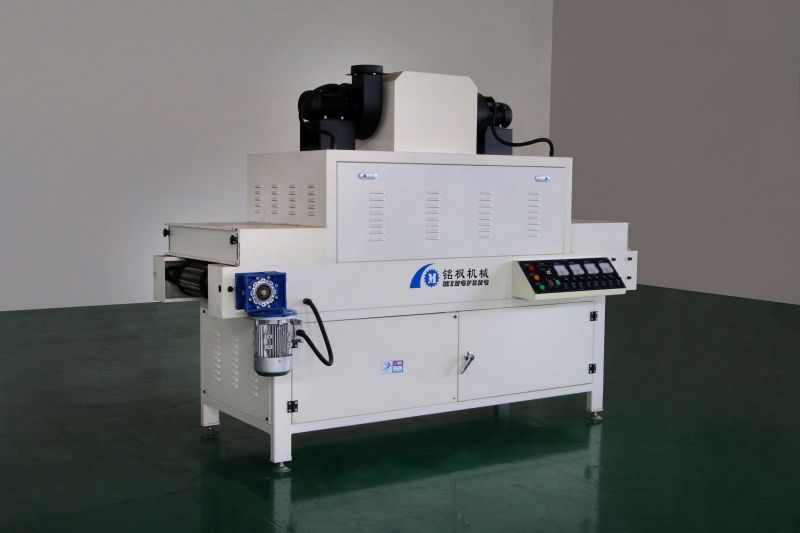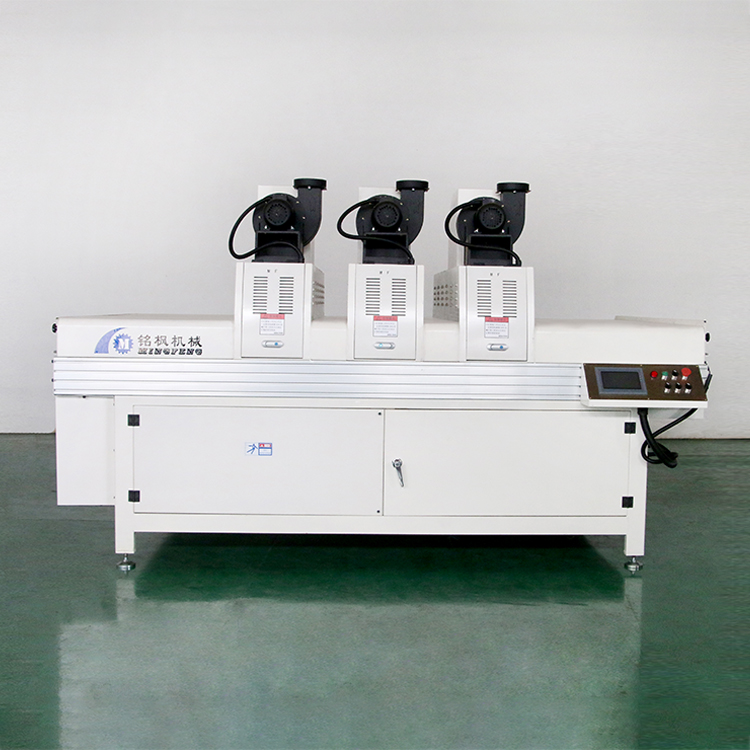Is a UV Dryer Machine for Wood safe?
UV dryer Machine technology principle: the scientific logic behind efficient curing
1. What is UV Dryer Machine?
UV Dryer Machine (UV Dryer) is a device that utilizes an ultraviolet (UV) light source to trigger the rapid curing of photosensitive coatings or resins. It is commonly used in wood processing to cure surface coatings (e.g. UV lacquers), harden adhesives or for specific modification treatments. The core components include the UV lamp, reflector, cooling system and conveyor.
2. UV Dryer Machine workflow and advantages
Coating: The surface of the wood is coated with a UV coating containing a photoinitiator.
UV Exposure: The conveyor belt feeds the wood into the UV dryer Machine, and the high-intensity UV lamp emits ultraviolet light (wavelength 200-400nm), which triggers cross-linking reactions of the coating molecules, and the curing is completed within a few seconds to minutes.
Increased efficiency: Compared to traditional drying methods (hours to days), UV curing speed is increased by more than 90% and energy consumption is reduced by 30%-50%.

the focus of safety controversy: the potential risk of ultraviolet radiation and material reaction
Although UV dryer Machine have been widely adopted, their safety is still concerned by many parties, and the controversy mainly focuses on the following aspects:
1. Effects of UV radiation on human body
Skin and eye damage: UV-C band (200-280nm) is strongly carcinogenic and long-term exposure can lead to erythema, keratitis and even cataracts. Although most equipment is designed to be shielded, improper maintenance may cause leakage.
Ozone generation: UV lamps ionize in the air to produce ozone (O₃), high concentrations of ozone can cause respiratory diseases, need to be equipped with exhaust systems.
2. Potential changes in wood properties
Thermal stress cracking: Some high-intensity UV lamps may locally heat up, resulting in sudden changes in the moisture content of the wood, causing micro-cracks.
Color difference and aging: UV light may accelerate the degradation of lignin in wood, and may cause yellowing of color (especially light-colored wood) in long-term use.
3. Environmental and operational safety
Disposal of waste lamps: UV lamps contain mercury and other toxic substances, and need to be professionally recycled to avoid pollution.
Risk of fire: The surface temperature of UV lamps can reach 600°C, which may cause fire if it comes into contact with flammable materials.
industry safety standards and risk prevention and control measures
In order to cope with the above risks, international organizations (e.g. ISO), EU CE certification and China GB standards have set strict specifications for UV dryer Machine:
1. Equipment design safety standards
Shielding protection: the equipment shell shall adopt metal sealing structure to block 99.9% UV leakage (radiation intensity ≤5mW/cm²).
Automatic locking system: the hatch is locked during operation, and the door is delayed after shutdown to ensure lamp cooling.
Ozone treatment: built-in activated carbon filtration or direct external discharge to harmless treatment device.
2. Operator protection requirements
PPE equipment: mandatory use of anti-UV goggles, long-sleeved work clothes and gloves.
Regular monitoring: Quarterly testing of UV intensity and ozone concentration in the working area.
3. Wood adaptability management
Pre-treatment test: different species of trees need to carry out small sample tests to optimize the UV dose and wavelength combination.
Temperature control optimization: add infrared sensors to dynamically adjust the lamp power to prevent local overheating.
Practical Cases: The Way to Balance Safety and Efficiency
Case 1: Italian high-end furniture brand Savio Firmino
After introducing the UV dryer Machine, this enterprise established a three-level safety system:
Equipment layer: adopting LED-UV cold light source (wavelength 395nm), which reduces the radiation intensity by 70% and has zero ozone emission.
Process layer: set up independent drying workshop and install real-time radiation monitoring screen.
Training layer: Employees receive UV safety operation certification training every year.
Result: Zero safety accidents in 3 years, coating curing uniformity increased to 98%.
Case 2: Accident Analysis of a Plywood Factory in Shandong, China
In 2022, two workers suffered second-degree burns to their arms at a factory after a UV dryer Machine was modified in violation of the law and the guard was removed to “speed up the conveyor”. The aftermath investigation showed:
The intensity of the UV leakage exceeded the standard by a factor of 12.
Workshop is not equipped with ozone emission system, triggering collective dizziness.
Lesson: Equipment modifications require manufacturer's authorization, and safety cannot be compromised.
Conclusion: Safety depends on both technology and management
The safety of a UV Dryer Machine is not absolute, but is the result of a combination of technical design, operational compliance and ongoing supervision. For wood processing companies, choosing internationally certified equipment, establishing strict operating procedures, and continuing employee training are the only way to maximize the benefits of UV technology and avoid potential risks. With the popularization of low energy LEDs and intelligent monitoring, UV dryers are expected to become the industry standard for both efficiency and safety.

